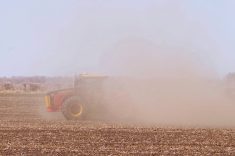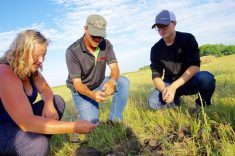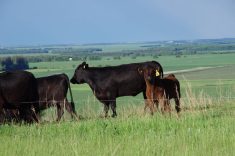A recent opinion piece in the Manitoba Co-operator references the Business Risk Management Task Force report that Farmers for Climate Solutions released almost a year ago (“NFU stance on BRM programs mystifying,” Feb. 16). The article makes a number of claims that are not correct and require clarification.
I am a farmer who has been enrolled in the various business risk management programs for more than 30 years. I was engaged in the process when many of our current BRM programs were first created in the 1980s and 1990s, and was asked to chair the task force by Farmers for Climate Solutions.
Read Also

The new spin on farm legacy
Farmers are starting to think differently about the future of their farms in Western Canada. What does this mean for the next generation and farm succession planing?
I know BRM programs, and how essential they are to farmers across the country. The task force I chaired recommended these programs be strengthened to ensure they remain as climate change and extreme weather ramp up, and that farmers be rewarded for adopting practices that reduce their risk. The task force did not recommend eliminating, privatizing or weakening BRM programs, as the recent article falsely claims.
As farmers, we are on the front lines of climate change for three distinct reasons. First, the weather determines our production capacity, and we are now working with increased volatility in weather patterns.
Second, we oversee a large land base. While the overall outcome of climate change will be determined by the pace at which humans move away from fossil fuels, how land is farmed has tremendous impact on the pace of climate change.
Third, consumers and food processors are actively looking for ways to reduce emissions in their supply chains and grocery carts. Those demands are increasingly being pushed down the value chain to the farm gate.
Canada’s BRM programs make up more than half of total public expenditure in agriculture, and climate change is the single biggest risk faced by our sector. This reality means that we must look for ways to efficiently manage climate risk at farm level and to reward farmers for adopting risk-reducing practices.
This is what the BRM Task Force was created to do. We focused on AgriInsurance and AgriInvest, the two programs with the biggest potential to help farmers become more resilient.
For crop insurance, publicly supported production insurance that maintains its actuarial integrity is essential. It should not be privatized or weakened. We recommended reduced premiums for farmers who adopt practices that reduce risk, such as adding crops to their rotation or intercropping. We called for innovative new products like BMP insurance to make the adoption of those practices less risky.
The only area where reduced coverage was recommended was for newly converted land. The task force recognized that markets are the primary driver of the current pace of land conversion. However, to ensure that crop insurance does not further encourage this practice, it was recommended that newly broken lands or wetlands not be able to be insured for a period of time. Destroying wetlands, pushing trees and breaking new land remains a major source of emissions from agriculture.
We also recommended that crop averaging be made more readily available in all provinces. Crop averaging creates lower premiums for farmers while increasing coverage by insuring a basket of crops grown on the farm — the more crops grown, the greater the premium reduction.
This encourages more diverse rotations, which has been shown to improve resilience and reduce emissions. Crop insurance payouts become larger when there is a disaster, but modest failures may not trigger a payment. We’ve found this new approach to be a really effective, on-farm risk management tool for our farm.
The task force also focused on AgriInvest, which provides matching payments to farmers to use as they see fit to manage financial risk. Government is highly aware that AgriInvest is not meeting its mandate, and is seen by many in the sector as “free money” for farmers. There is considerable risk that governments might discontinue this program if it is not providing any obvious public benefit.
To protect the program by helping it meet its mandate, we recommended that a bonus be paid to farmers who complete a new climate module for the Environmental Farm Plan. After two years of bonuses, eligibility for AgriInvest would become dependent on completion of the module.
Tying AgrInvest to increased climate awareness is the best way to ensure that the program is not eliminated completely. It’s also important so that farmers have the information that we need to lead innovation in risk management on-farm.
Business risk management programs have never been static. They must evolve as new risks emerge. Our programs must change to meet the challenge of climate risk. The best way forward is through open dialogue based on science, data and the real-world experience and innovations of farmers.
Ian McCreary is a grain and livestock farmer in central Saskatchewan. He holds a Masters in agriculture economics and has chaired two task forces for Farmers for Climate Solutions, leading research projects advancing policy recommendations for the 2021 budget as well as potential reforms to BRM programs.















